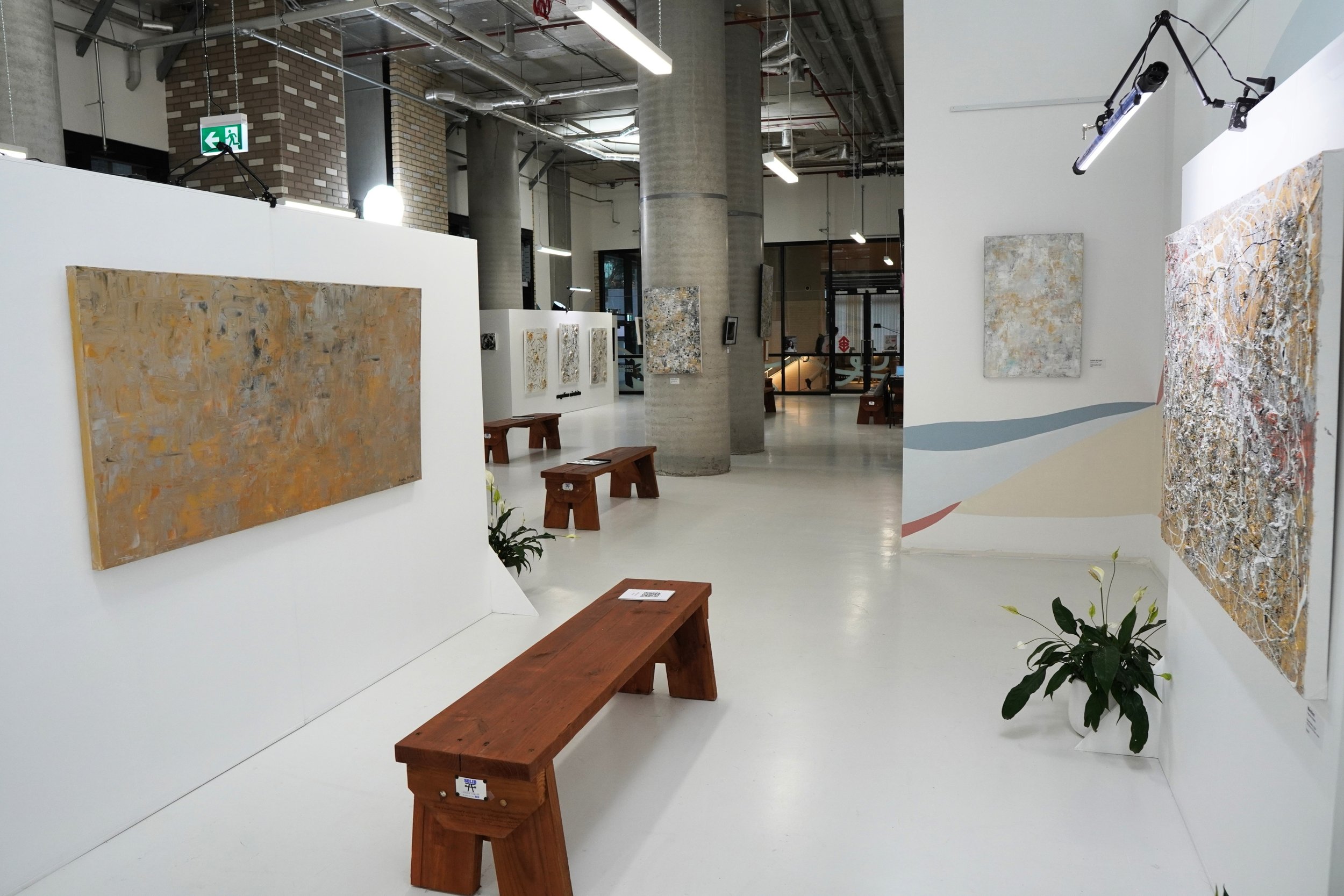Design the World You Want
This year’s Melbourne Design Week theme—Design the World You Want—raises a powerful question:
How do we engage differently with the world we currently experience to transform it into what we want?
What details need to shift—and which of those can we begin to work with constructively?
I’ve found that working with what we have often sets the wheels of change in motion. When we accept the present moment—its limitations, textures, and quirks—we open the door to unexpected possibilities and fresh perspectives.
At its heart, Art of Surface: Texture & Colour in Spatial Design exhibition is about transformation. The hero piece, Alter, emerged from energy, fear, and a deep desire for change—something that feels especially relevant in 2025.
But intentional change toward a better world, one that you, I, and we want—doesn’t happen in isolation. It requires collaboration, openness, and a willingness to hold space for diverse perspectives and ways of being.
This is where art and design are powerful allies. They function best not as separate disciplines, but in conversation—with each other and with the world around them. Together, they shape our environments and, in doing so, transform how we experience daily life.
That brings us to the space this exhibition is held within—The Gladstone—a building designed with vision and care for community.
The space we’ve activated is itself in transition, much like Fishermans Bend. Historically industrial, this area is now evolving into a residential, commercial, and innovation-focused hub. The Gladstone is nearly complete, with residents continuing to move in.
We have been supported by The Gladstone and FB Ideas to work with what’s here—before it becomes a café: one power point, no sink, and an existing mural. It’s not a traditional gallery or a polished open artist studio. But within these limitations, we uncovered 200 square metres of possibility. Paradoxically, those constraints gave us freedom—because we couldn’t follow the usual expectations.
My approach to spatial design and activation is deeply influenced by my relationship with space—shaped by long periods of stillness and years of being largely immobile and housebound. During that time, space became my teacher. I watched light move across white walls. I noticed surfaces, textures, and the quiet ways design holds us. I came to understand how deeply the spaces we inhabit affect how we function, feel, connect—and exist.
The Art of Surface: Texture & Colour in Spatial Design Exhibition is a reflection of that journey—through trauma, recovery, and creative transformation. It explores the quiet power of design in relation to art—how it can soothe the nervous system, shift perception, and open us to new ways of being. As I’ve come back to life, I’ve felt myself emerge sculpturally from the canvas. Art on white walls has carried me from invisibility to visibility; from acute social anxiety to running exhibitions and giving talks.
And that power of art within spatial design to activate and inspire isn’t unique to me. I’ve witnessed how people respond to art in public, private, and commercial everyday spaces. The world I envision is one where art and design increasingly intersect, quietly, powerfully, to transform how we live, transition, and imagine what’s possible.
When art and design meet in the right tension, they elevate us. They create experiences of dignity, beauty, and integrity—and offer opportunities to see and feel life anew.
This exhibition came together through many layers of collaboration. I want to acknowledge the generous support of The Gladstone and FB Ideas, whose work demonstrates how systems-level design can shape the kind of world we want to live in. Thank you also to Arts Access Victoria, who proudly auspiced the project.
Special thanks to Scott Ross, whose tireless efforts and practical support have been invaluable every step of the way.
And I’m honoured to share this with filmmaker and artist Samuel Galloway, whose poetic work with rain moths and light powerfully resonates with the exhibition’s theme of transformation.
Melbourne Design Week and the Artist in Residency program at The Gladstone mark an important chapter in the ongoing documentary of how art transforms both our inner lives and the world around us.






